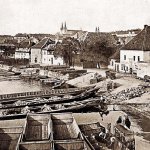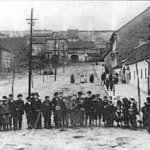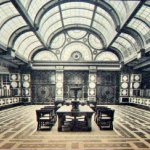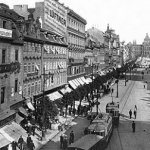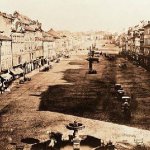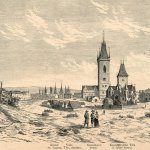History
PRAGUE - the capital of the Czech Republic, has always played an important role in the history of its country and Europe. Since the Middle Ages Prague has been famous as one of the most beautiful cities of the world and has been attributed adjectives such as “golden“, “hundred-spired“, and “the crown of the world“.
The unique character of the city is partly a consequence of its natural environment: Prague, similar to Rome built on seven hills, was built on nine hills along the Vltava river, which flows through the city for a distance of 31 km and forms a perfect unit with the city. The dominant architectonic features of the city are reflected in the river: towers, church spires and cupolas, palaces and town houses, along within the greenery of gardens, parks and islands.
Prague was founded on the cross-roads of ancient trade routes at a site where the most varied spiritual and cultural currents merged. Its history begins with the founding of Prague Castle in the 9th century. Of the original stone buildings in pre-Romanesque style, a basilica remains from the second half of the 10th century, and forms the core of St George´s church. Among the preserved Romanesque structures in Prague, three renovated rotundas can be visited. At the time of the founding of the Old Town of Prague at the beginning of the 13th century, the Romanesque style began to be replaced with Gothic; the oldest structure in this style is the Convent of St. Agnes of Bohemia or the Old-New Synagogue, while St. Vitus Cathedral, Charles Bridge, the Church of Our Lady before Týn etc. are examples of the prime of this style. The greatest flourishing of the Czech state occured at this time, which will eternally be connected with the monarch Charles IV, who founded the famous Charles University in 1348 - the first university in Central Europe. The late Gothic style is connected with buildings such as Vladislav Hall, the Powder Tower and the Old Town Hall with the Horologe.
The historic centre of Prague (Hradčany with Prague Castle, the Lesser Quarter, Old Town including the Charles Bridge and Josefov, New Town and Vyšehrad) occupies an area of 866 ha, and has been on UNESCO’s World Heritage List since 1992.
The centre of Prague is characterised by winding alleys and constructions of all architectural styles – Romanesque rotundas, Gothic cathedrals, Baroque and Renaissance palaces, Art Nouveau, Classicist, Cubist and Functionalist houses and modern buildings.







